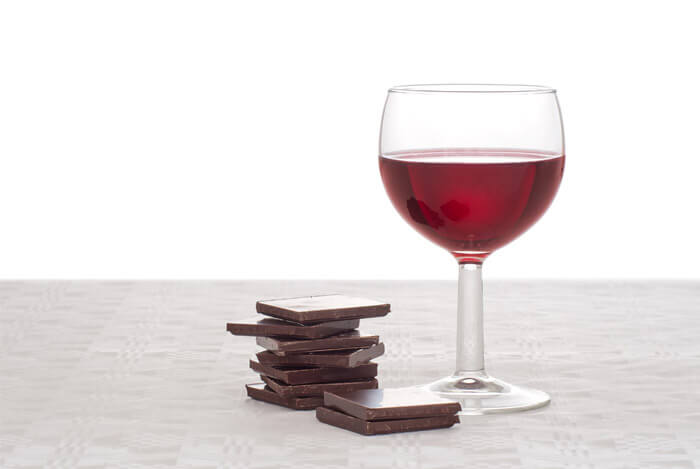Have you been diagnosed with an inflammatory condition, like allergies or arthritis?
Being overweight can also cause inflammation, so any diet that helps you lose weight will typically reduce inflammation as well.
Regardless of the reason, you may want to focus on using your diet to reduce inflammation.
Well, to make it a little easier for you, I’ve come up with six tasty and healthy meal plans, which will almost get you through your first week on this healing diet.
- The Anti-Inflammatory Food Menu
- Vegetables and Fruits
- Whole Grains, Beans & Legumes
- Healthy Fats
- Fish & Seafood
- Cooked Asian Mushrooms
- Herbs & Spices
- Tea
- Red Wine & Dark Chocolate
- Anti-Inflammatory Meal Plans
Table of Contents
+The Anti-Inflammatory Food Menu
To help you understand how I came up with these different eating plans, let’s look at the array of tasty and delicious foods you’re going to eat.
Vegetables and Fruits
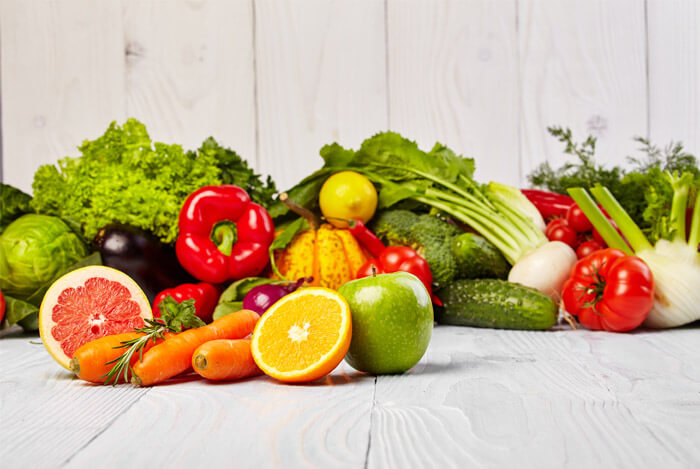
Fruits and vegetables will make up the bulk of your meals and snacks. Aim for at least 4 to 5 servings of vegetables and 3 to 4 servings of fruit per day.
And, of course, fruits and vegetables are loaded with natural antioxidants such as flavonoids, carotenoids and vitamins A, C and E making these foods the key to fighting inflammation.
The more brightly colored the fruit or vegetable, the more rich in antioxidants. That’s why dark leafy greens, bright orange carrots and rich blueberries are all such superfoods.
Whole Grains, Beans & Legumes
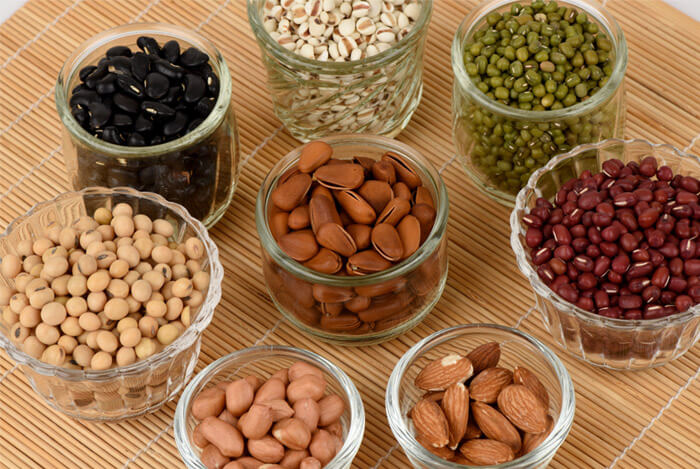
When it comes to carbohydrates, choose whole over refined grains as much as possible.
Instead, go with brown rice, buckwheat, quinoa, oatmeal and wholegrain bread, aiming for 3 to 5 servings a day. Wholegrain pasta, cooked al dente, can be enjoyed 2 to 3 times a week.
Numerous studies cite the anti-inflammatory effects of these whole grain foods.
They have been shown to reduce markers of systemic inflammation in obese children, with regular consumption shown to lower death rates in inflammatory-related conditions such as coronary heart disease and diabetes.
Beans and legumes are great sources of plant-based protein and are low glycemic and high fiber to boot.
For example, one cup of black beans will give you 15 grams of both protein and fiber.
In addition to several important nutrients like magnesium, one cup of black beans also contains 64% of your recommended daily value of folate, something shown to reduce inflammatory markers.
One to two portions of beans or lentils are recommended per day.
Healthy Fats
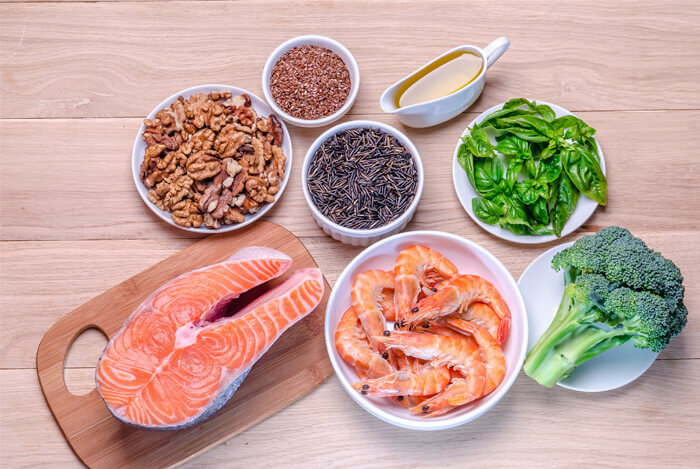
Not only do they boost satiety (the feeling of fullness) but healthy fats are rich in monounsaturated and omega 3 fatty acids which provide antioxidants like vitamin E and selenium.
Omega 3s are also potent anti-inflammatories.
Don’t worry about getting enough omega 6s as the standard American diet is loaded with them.
Anti-inflammatory ‘good fats’ include avocados, seeds, nuts, nut butters and whole olives. Where possible, choose extra-virgin olive oil as your oil of choice.
Fish & Seafood
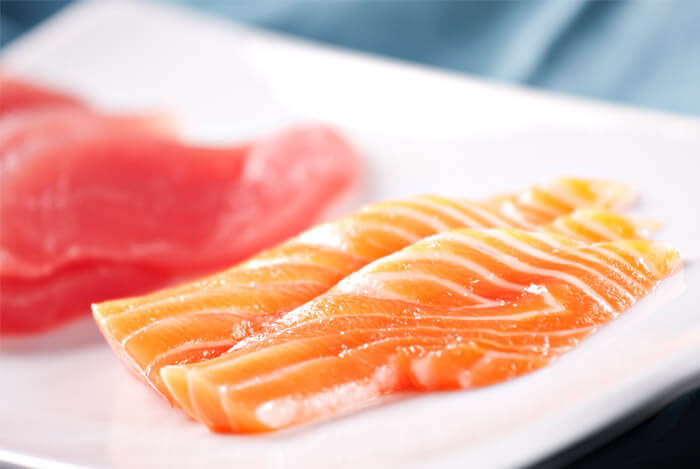
Fish, particularly fatty fish like salmon, tuna, sardines, mackerel, and trout, is an incredibly healthy food that is loaded with omega 3s and other vital nutrients, including iron, vitamin D, iodine and B12.
If you’re not eating fish 2 to 6 times a week, try a fish oil supplement daily.
Cooked Asian Mushrooms
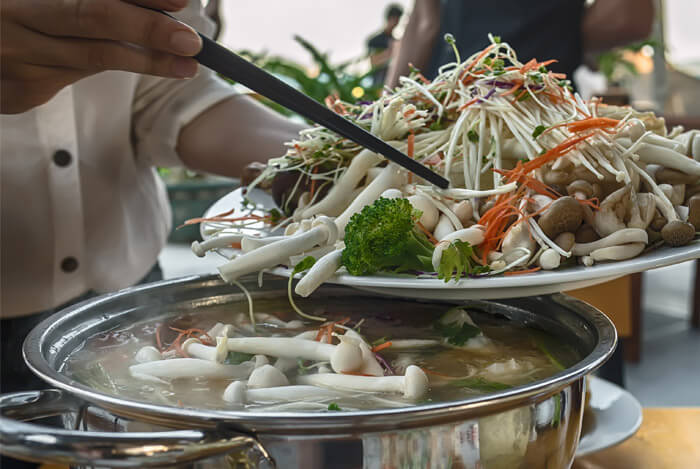
On the anti-inflammatory eating plan, you can enjoy unlimited quantities of these mushrooms. Add them to soups, stir-fries and salads…and anything else that takes your fancy.
Herbs & Spices
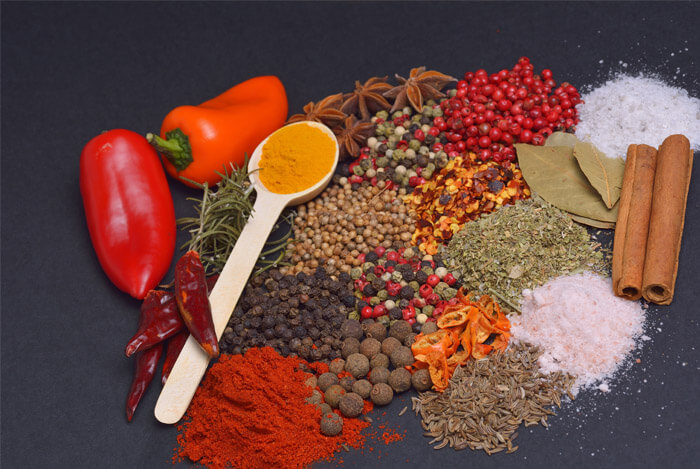
Herbs and spices aren’t just for flavoring your food – they possess anti-inflammatory and antioxidant properties which can help fight many illnesses.
Season your food liberally with all sorts of fresh and dried herbs and spices including:
- Oregano
- Garlic
- Turmeric
- Black Pepper
- Ginger
- Cinnamon
Tea
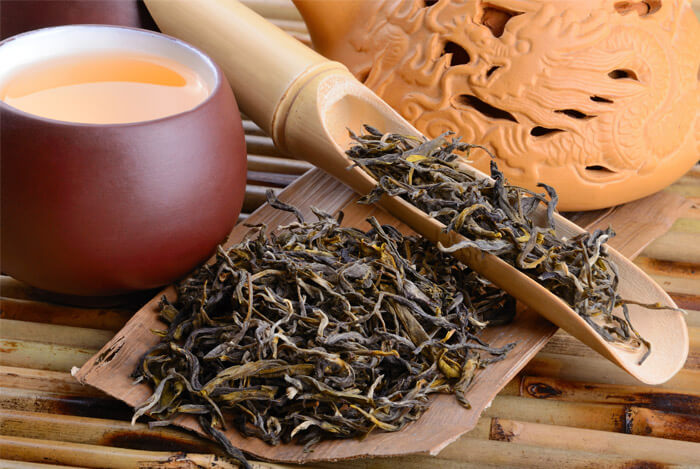
This healthy eating plan recommends two to four cups a day of white, green or oolong tea.
Oolong tea is loaded with antioxidants and has been found to improve some markers of heart disease.
Green tea boasts some incredible health benefits, which you can read about here. It also has proven anti-inflammatory qualities.
Red Wine & Dark Chocolate
These two categories are at the very top of the pyramid, meaning they should be enjoyed sparingly, if at all.
If you don’t drink red wine, then don’t start! While red wine contains beneficial antioxidants and compounds, which can help fight inflammation, too much will have negative health effects.
Cocoa, the main ingredient in chocolate, is rich in antioxidant flavonoids called flavanols. It also has potent anti-inflammatory powers when enjoyed as an occasional indulgence.
Now that you know you’re not going to starve on the anti-inflammatory diet, or be stuck chewing on food that tastes like cardboard, let’s get right to the six different meal plans I’ve compiled for you.
Anti-Inflammatory Meal Plans
Day 1 Meal Plan
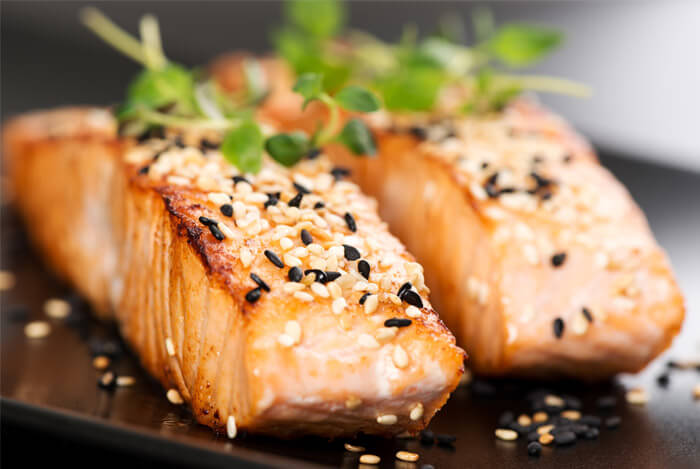
Breakfast: Tea of choice, oatmeal made with soy milk and topped with blueberries, ground flaxseeds, half a banana and a sprinkling of cinnamon
Morning Snack: A handful of almonds
Lunch: Spinach salad with cherry tomatoes and grilled salmon, with an extra-virgin olive oil and lemon juice dressing
Afternoon Snack: Green tea with fresh ginger, half an avocado on rye crackers with cracked black pepper and red chili flakes
Dinner: A chickpea and vegetable curry (try sweet potato, peas, spinach, cauliflower, Asian mushrooms, turmeric etc.) with brown rice
Treat (optional): Small glass of red wine
Day 2 Meal Plan
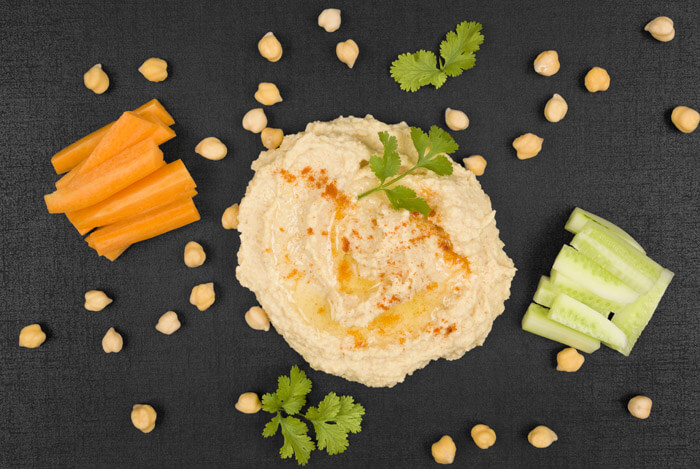
Breakfast: One omega-3 enriched organic egg, poached, on a slice of wholegrain toast and an apple
Morning Snack: Green tea; hummus with sticks of carrot and cucumber
Lunch: Homemade miso soup with soba noodles, peas, mushrooms and green onion; a salad with avocado, mango, mixed greens, cherry tomato and a lime and olive oil vinaigrette
Afternoon Snack: Spiced watermelon and pistachios (see recipe here)
Dinner: Wholegrain pasta – cooked al dente – with kale, hemp & flaxseed oil pesto (see recipe here); green tea
Day 3 Meal Plan
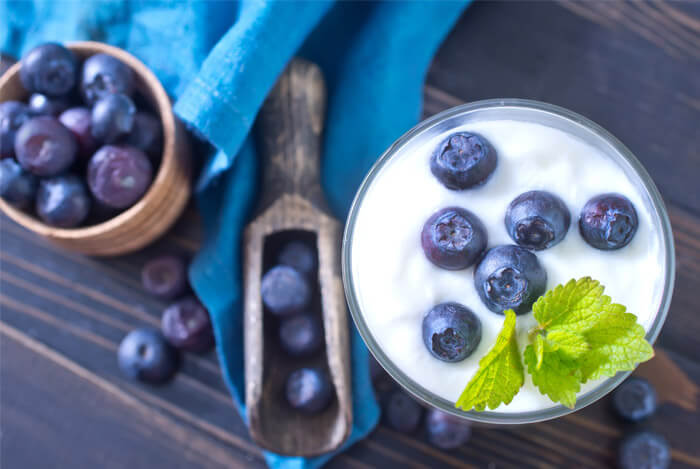
Breakfast: Smoothie with leafy greens of your choice, a banana, a tablespoon of seeds (hemp, flax or chia), pinch of cinnamon and non-dairy milk or water
Morning Snack: Green tea; soy yogurt with blueberries
Lunch: Leftover pesto pasta from Day Two; a pear or serving of melon
Afternoon Snack: Hummus, sliced avocado and cherry tomatoes on rye crackers
Dinner: Thai-style steamed trout made with ginger, chili, lime, garlic and soy sauce, served with broccoli and a baked sweet potato
Treat (optional): Two squares of dark chocolate (minimum 70% cocoa solids)
Day 4 Meal Plan
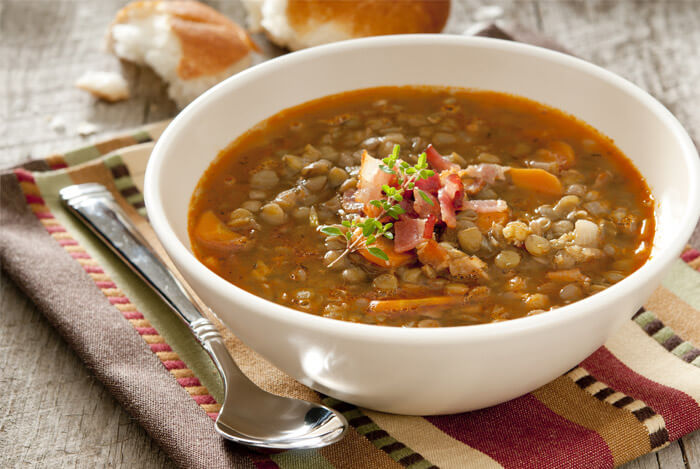
Breakfast: Chia pudding made with soymilk, cinnamon and a banana
Morning Snack: Green tea and a small apple oat-bran muffin
Lunch: Vegetable and lentil soup; an orange
Afternoon Snack: Celery sticks filled with almond butter
Dinner: Chicken fajitas with one organic chicken breast, mixed vegetables and spices topped with salsa, half an avocado and served in 1 to 2 wholegrain tortilla wraps
Day 5 Meal Plan
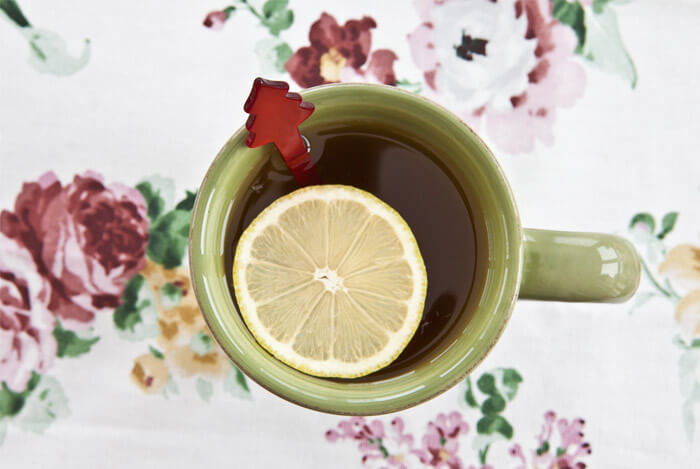
Breakfast: Same smoothie as Day Three
Morning Snack: Green tea with sliced lemon; a rice cake with almond butter
Lunch: Chopped power salad with baked tofu and almond-miso dressing served with a wholegrain pita bread
Afternoon Snack: Spicy roast chickpeas (see recipe here) and a handful of berries
Dinner: Pan-seared fish with shiitake mushrooms served with sautéed green vegetables and quinoa
Treat (optional): Small glass of red wine
Day 6 Meal Plan
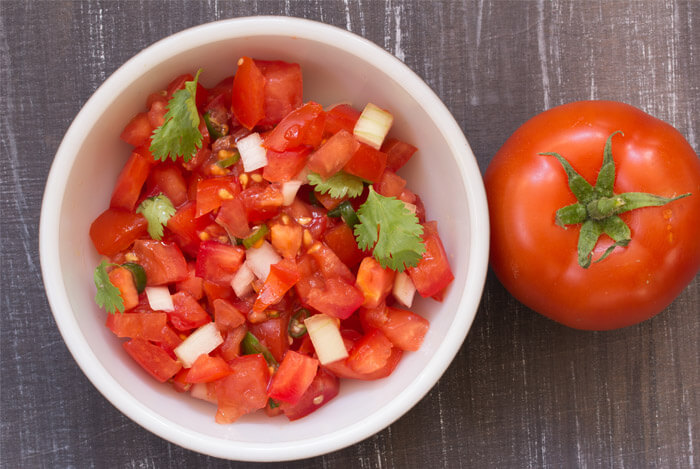
Breakfast: Overnight oats made with soy milk or yogurt, topped with nuts, shredded coconut and fresh fruit; green tea with fresh ginger
Morning Snack: Steamed edamame with olive oil and lemon juice
Lunch: Lemon and herb sardine salad; an apple
Afternoon Snack: Tomato salsa with sliced bell peppers to dip
Dinner: Sweet potato, black bean and rice burger in a wholegrain bun, with sliced avocado and a green salad; followed by tea of your choice
Treat (optional): Two squares of dark chocolate (minimum 70% cocoa solids)
So that’s it – one delicious week on the anti-inflammatory eating plan made easy.
What’s your take on these meal plans? Have anything else you’d like to share? Let me know in the comments below!
+ Scientific References
- Chatterjee, P., Chandra, S., Dey, P., & Bhattacharya, S. (2012). Evaluation of anti-inflammatory effects of green tea and black tea: A comparative in vitro study. Journal of Advanced Pharmaceutical Technology & Research, 3(2), 136. https://doi.org/10.4103/2231-4040.97298
- K, S., T, K., A, T., D, F., Y, N., M, Y., K, T., T, S., K, H., & J, Y. (2004). Oolong tea increases plasma adiponectin levels and low-density lipoprotein particle size in patients with coronary artery disease. Diabetes Research and Clinical Practice, 65(3), 227–234. https://doi.org/10.1016/J.DIABRES.2004.01.003
- DR, J., LF, A., & R, B. (2007). Whole-grain consumption is associated with a reduced risk of noncardiovascular, noncancer death attributed to inflammatory diseases in the Iowa Women’s Health Study. The American Journal of Clinical Nutrition, 85(6), 1606–1614. https://doi.org/10.1093/AJCN/85.6.1606
- P, H., L, A., M, H., R, K., & A, E. (2014). Whole-grain intake favorably affects markers of systemic inflammation in obese children: a randomized controlled crossover clinical trial. Molecular Nutrition & Food Research, 58(6), 1301–1308. https://doi.org/10.1002/MNFR.201300582
